What is LASIK?
LASIK (Laser-Assisted-In-Situ-Keratomileusis) treats refractive errors by folding back the top layer of the eye and re-shaping tissue underneath. Like other laser eye surgeries, LASIK treats vision impairments by reshaping the cornea to correct the way light is focused on the back of the eye.

How does LASIK work?
With LASIK, a surgeon cuts a sliver of tissue, essentially creating a flap at the front of the eye to expose the inner layers of corneal tissue to an excimer laser. Surgeons will either use a mechanical instrument called a microkeratome, or a femtosecond laser to create the flap.
When a femtosecond laser is used to create the LASIK flap, the procedure is described as Femto-LASIK surgery. This type of laser is extremely short-pulsed and near infrared. Its high peak intensity over a very short pulse duration (within a few femtoseconds of time) allows for micro-precision single cuts or planes in the corneal tissue without affecting the surrounding tissue. After the flap is folded back, an excimer laser treats the eye for the individual refractive error. The laser only ablates the necessary tissue, leaving the surrounding tissue unaffected.
Benefits
- Standard procedure: LASIK has been the standard treatment for over 20 years, and many surgeons are very experienced with this procedure.
- Quick recovery: Typically, vision becomes clearer within a couple of hours after surgery and gradually stabilises over the following weeks.
- High availability: LASIK is currently the most popular and prevalent form of laser eye surgery. Most clinics offering Laser Vision Correction have the technology available for this procedure.

Preparing for ZEISS LASIK Surgery
Before and on the day of surgery
Before surgery patients are usually directed by their doctor to:
- Stop wearing hard contact lenses for at least four weeks and soft lenses for two weeks before surgery, because they may interfere with preoperative diagnostic tests.
- Don’t make-up, perfume or lotion the day before and on the day of the procedure. These products may leave debris around the eye and eyelashes, which increases your chance of infection.
- Arrange for alternative transportation directly after the surgery, if you usually drive yourself and possibly for the next few days following surgery.
ZEISS LASIK Procedure
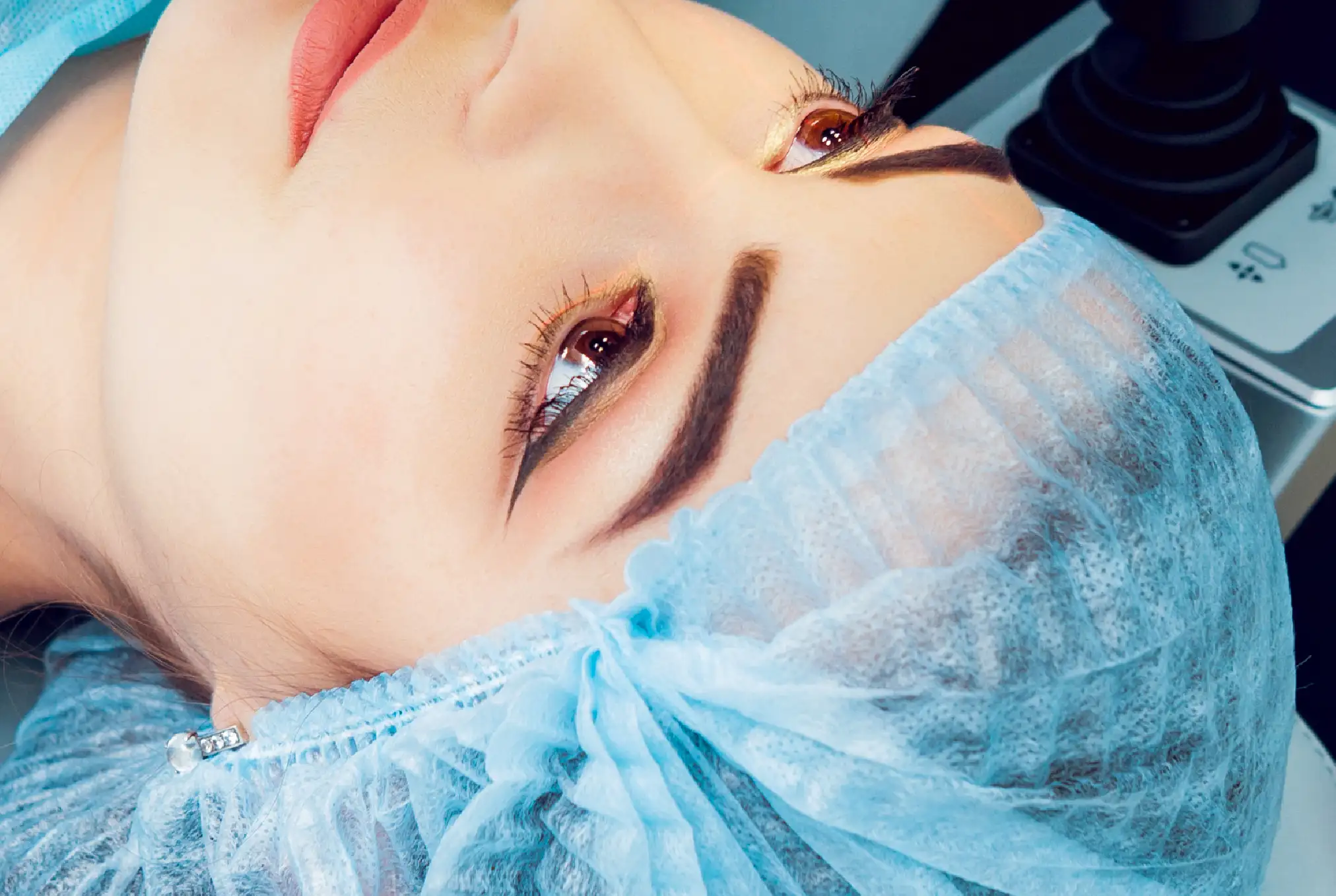
Numbing the eye
To reduce pain during the surgery, anaesthesia drops are given to numb the eye. An eyelid holder is used to prevent the eye from blinking during surgery.
Immobilizing the eye and creating the flap
After the eye is numbed, it needs to be immobilized for the surgery. This is done with a contact glass or suction ring which is gently placed on the eye. You may feel slight pressure when this occurs. Once the eye is held stationary, the doctor will slice a thin layer of tissue from the top of the eye with either a mechanical device (microkeratome) or a femtosecond laser.
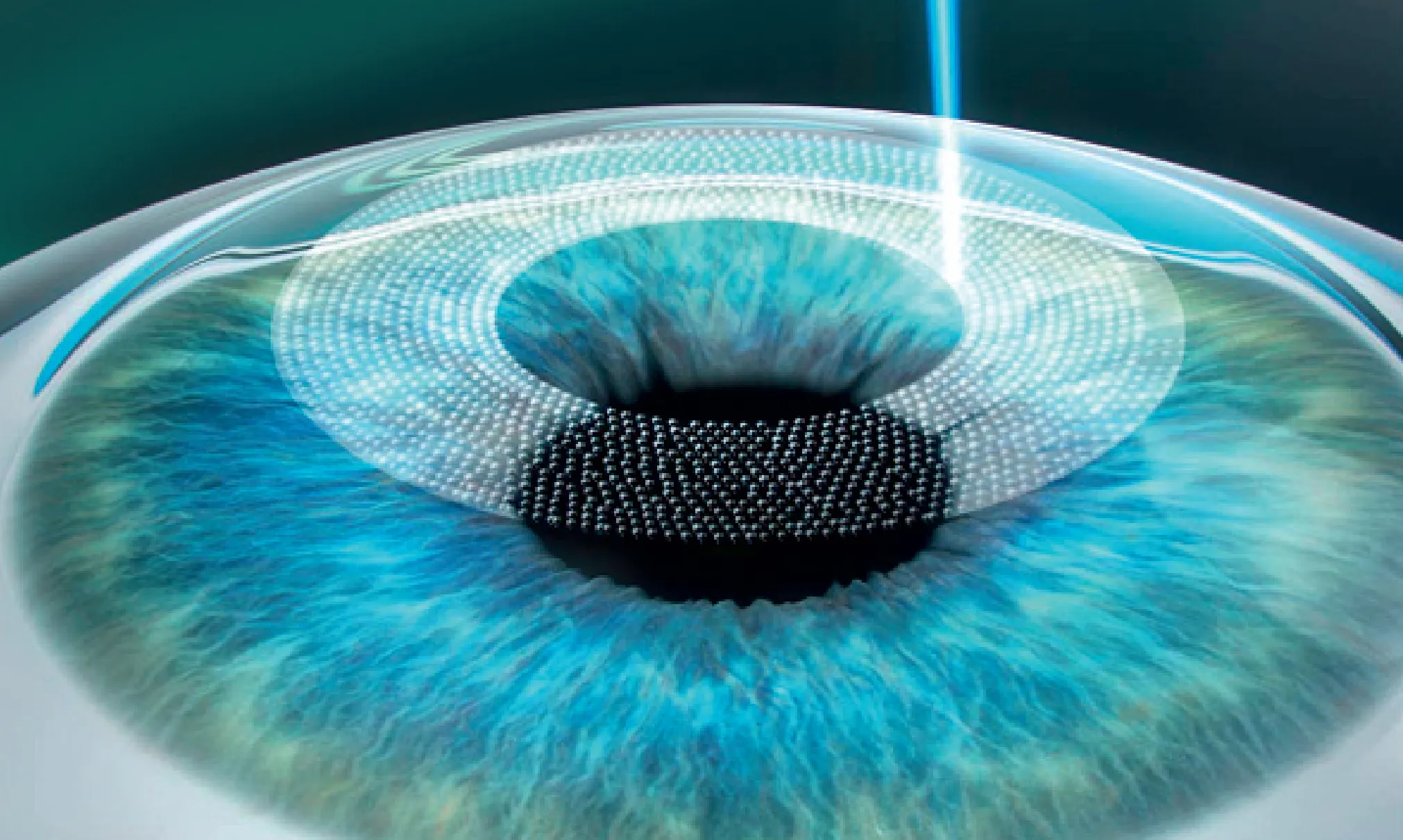
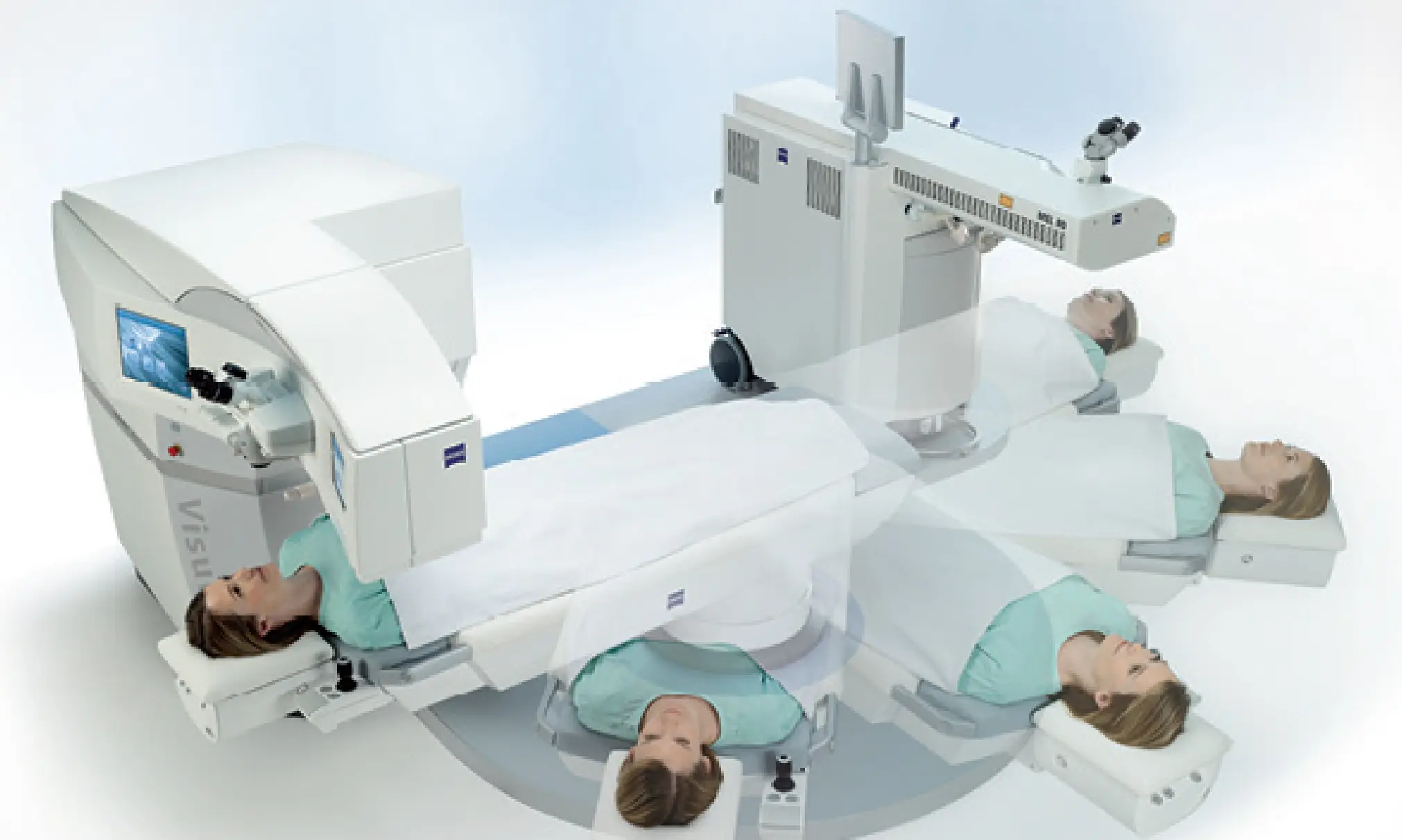
Changing to the excimer laser
After creating the flap, the patient will be moved to the excimer laser for the next step of the procedure. The doctor will then open the top layer of the eye – it is hinged back like opening a book.
Sculpting the cornea
The laser is used to sculpt the tissue in the cornea to correct the refractive error. Excimer lasers are equipped with an eye tracking system to follow and compensate for eye movement during surgery. Depending on the laser, there may be sounds and odours.
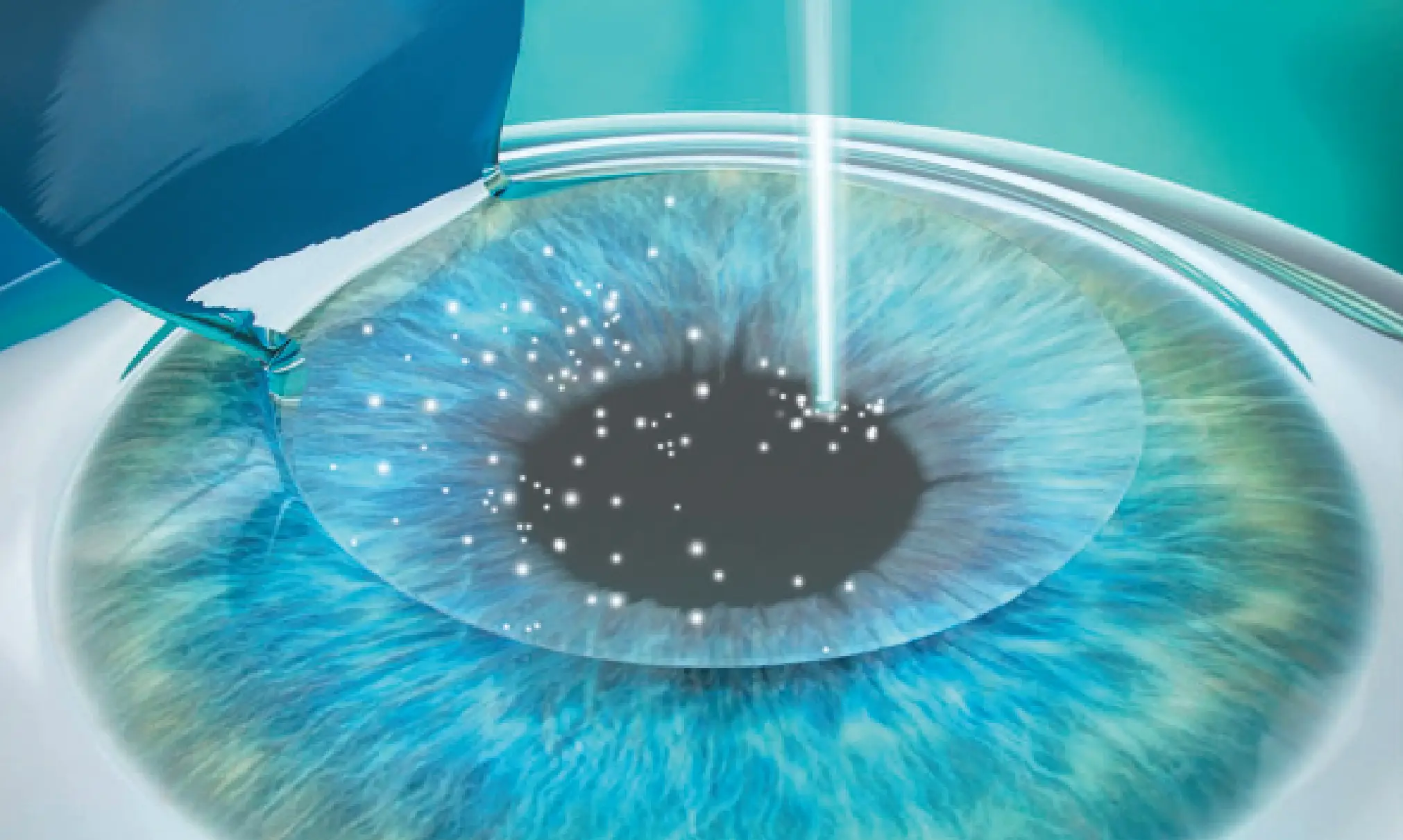
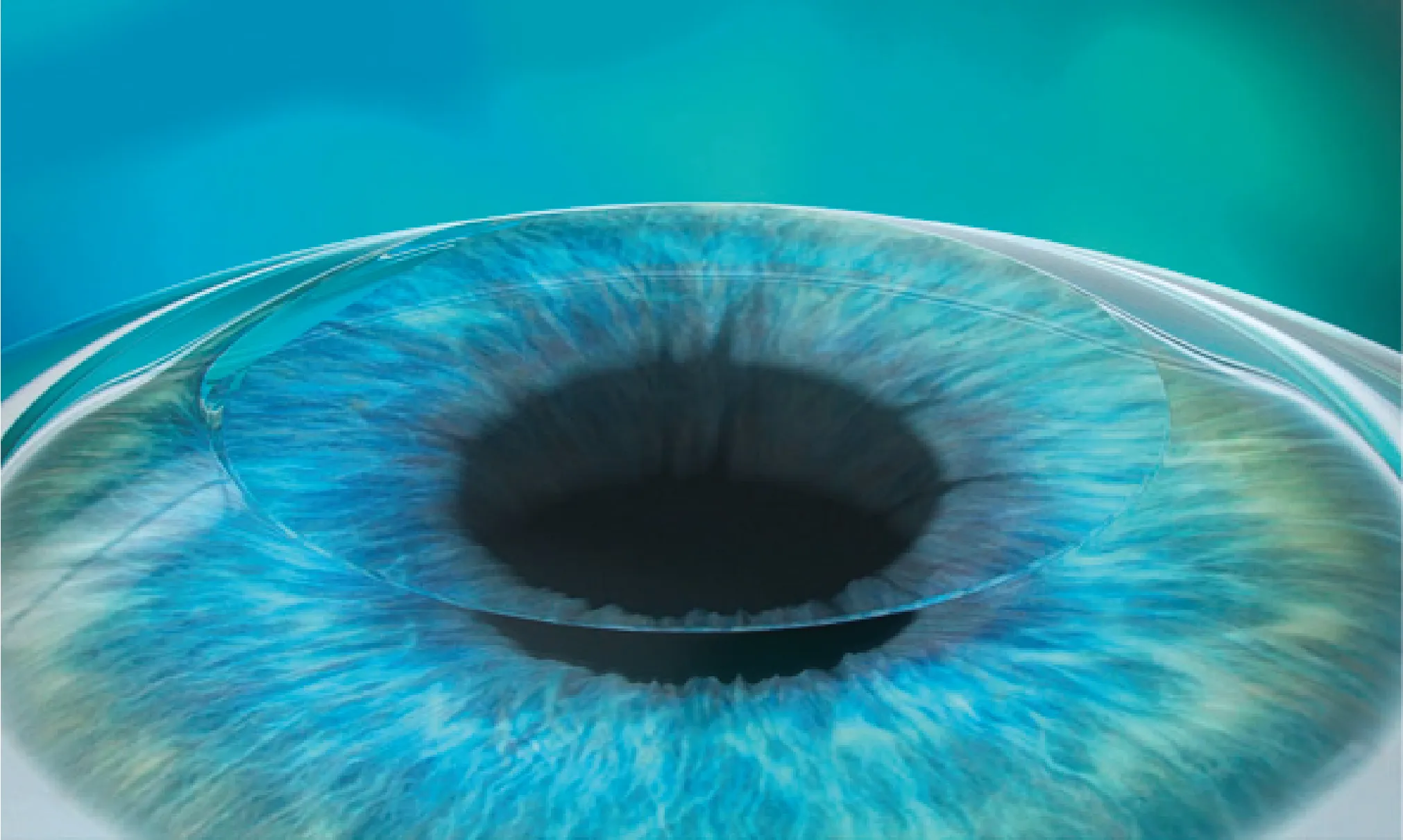
Adhering the flap
The surgeon will return the flap to its original position. Within hours, the flap will adhere to the underlying tissue without stitches.
After ZEISS LASIK surgery
After surgery, it is recommended to:
- Not rub the operated eye and to rest and not overexert yourself.
- Wear protective glasses the day after surgery to prevent accidentally moving the flap by rubbing the eye.
- Wear a patch while sleeping for a week to avoid accidentally scratching the eye and moving the flap.
- Use eye drops for a few days following the surgery to prevent infection and alleviate dryness.
- Avoid strenuous contact sports for at least two weeks.
- Doctors require a follow-up exam the day after surgery and again a month later.
- Within a few days after treatment, patients are normally able to drive, work and wear make-up
Potential side effects
No surgical intervention is completely free of risks and side effects. Your ophthalmologist can highlight all potential risks and will decide whether you are eligible for surgery.
However, the below can occur after surgery:
Flap-related complications: While the flap usually adheres back onto the eye after surgery, it does not completely seal itself back together with the corneal tissue. Since the flap sits on the eye, there is a remote chance for it to be dislodged, especially during contact sports or other activities. Complications with the flap after surgery may include infection, inflammation and dislocation of the flap.
Dry eye syndrome: This symptom can occur after LASIK vision correction surgery. Nerves cut during laser eye surgery may reduce the patient’s blinking frequency and/or give insufficient signals to the tear ducts. Blinking less frequently leads to the eye’s tear fluid evaporating faster than normal, which can result in the eye being less lubricated and drier. Dry eyes after LASIK can cause both discomfort and less optimal visual outcomes, but it typically improves or resolves with time.
Frequently Asked Questions about LASIK
What advantages does Femto-LASIK offer over the classic LASIK method?
The difference between the Femto-LASIK and the classic LASIK method is the way the flap in the cornea is created. A laser is used to cut the flap in Femto-LASIK. With the classic method, the surgeon opens the cornea manually with a microkeratome (mechanical device).
The laser can be more precise and predictable in cutting the flap than the manual method with a mechanical device. However, eye surgeons do not have a uniform opinion that one method is more clinically superior than the other. The decision between the two is based on a patient’s existing conditions and the doctor’s preferences.
What are my chances of seeing as well as when I wore glasses or contact lenses after LASIK surgery?
Not everyone will end up with 20/20 vision after undergoing LASIK surgery. A global review of LASIK from 2009 however, found that more than 95% of LASIK patients from 1995 to 2003 were satisfied with the outcome of their surgery.
PRK and SMILE® surgeries require no flap in the cornea. How do these solutions differ from LASIK?
PRK is not typically recommended for the treatment of severe nearsightedness, while SMILE® can’t treat farsightedness. It’s best to discuss your options with an eye specialist and find an ideal solution for your individual needs.
How long will it take to recover after LASIK surgery and return to my normal routine?
The procedure typically takes around 30 minutes, and you can return to your daily activities within a day or two. Recovery time differs between individual patients, but the flap should be stable within a matter of days. Your vision may take a few days to become stable after the surgery. Doctors typically require a follow-up exam the day after and one month after surgery to check on your progress.
